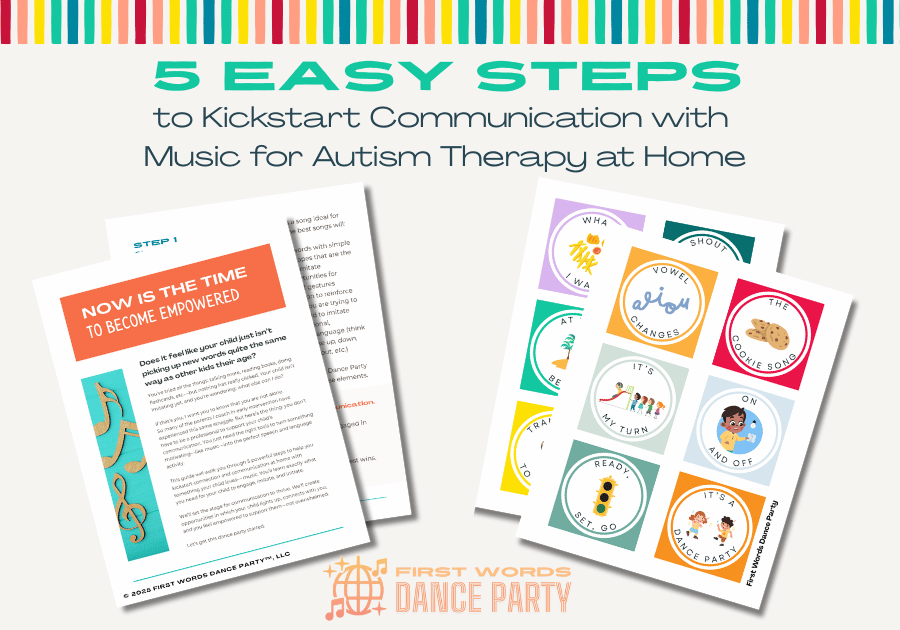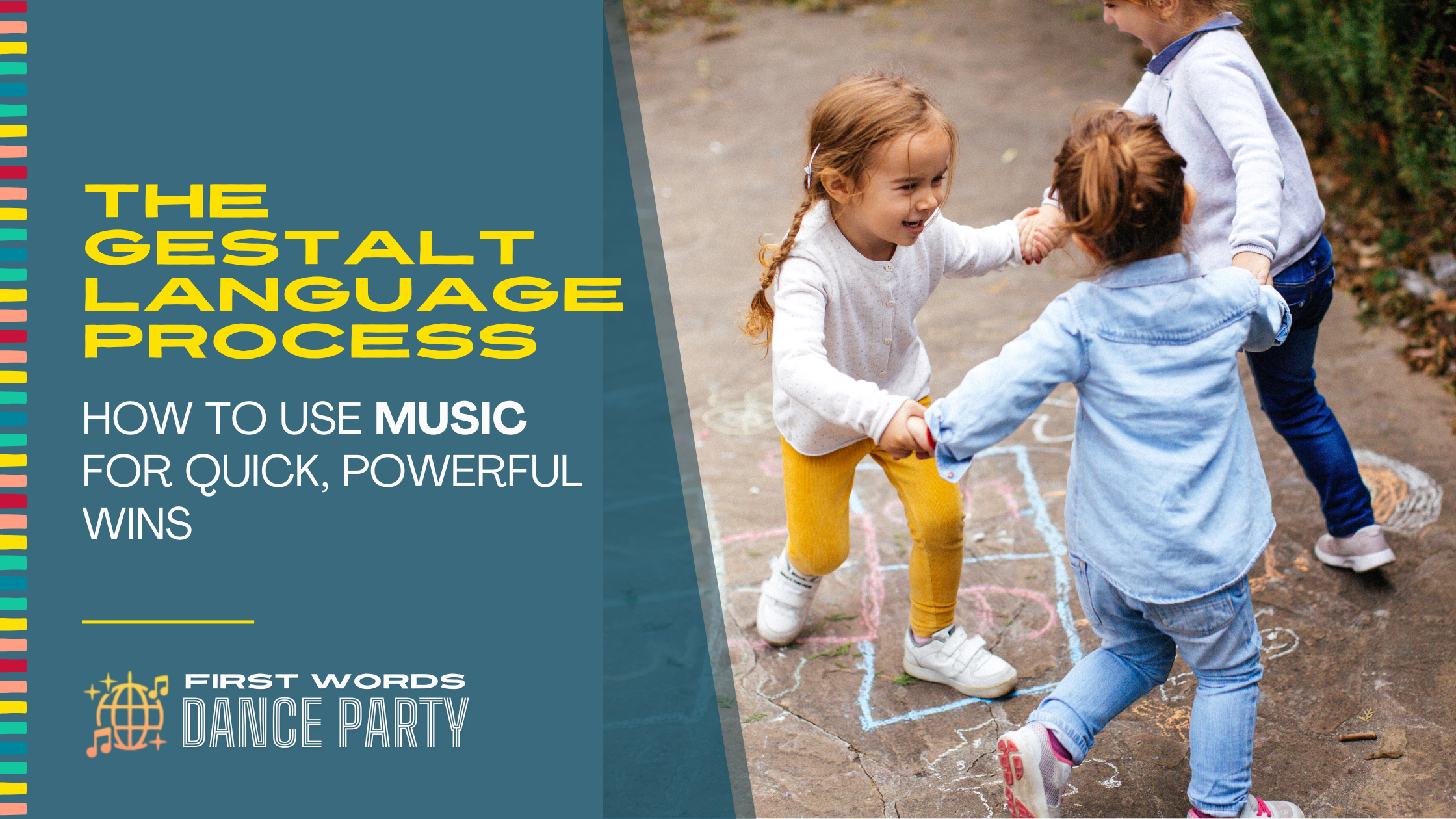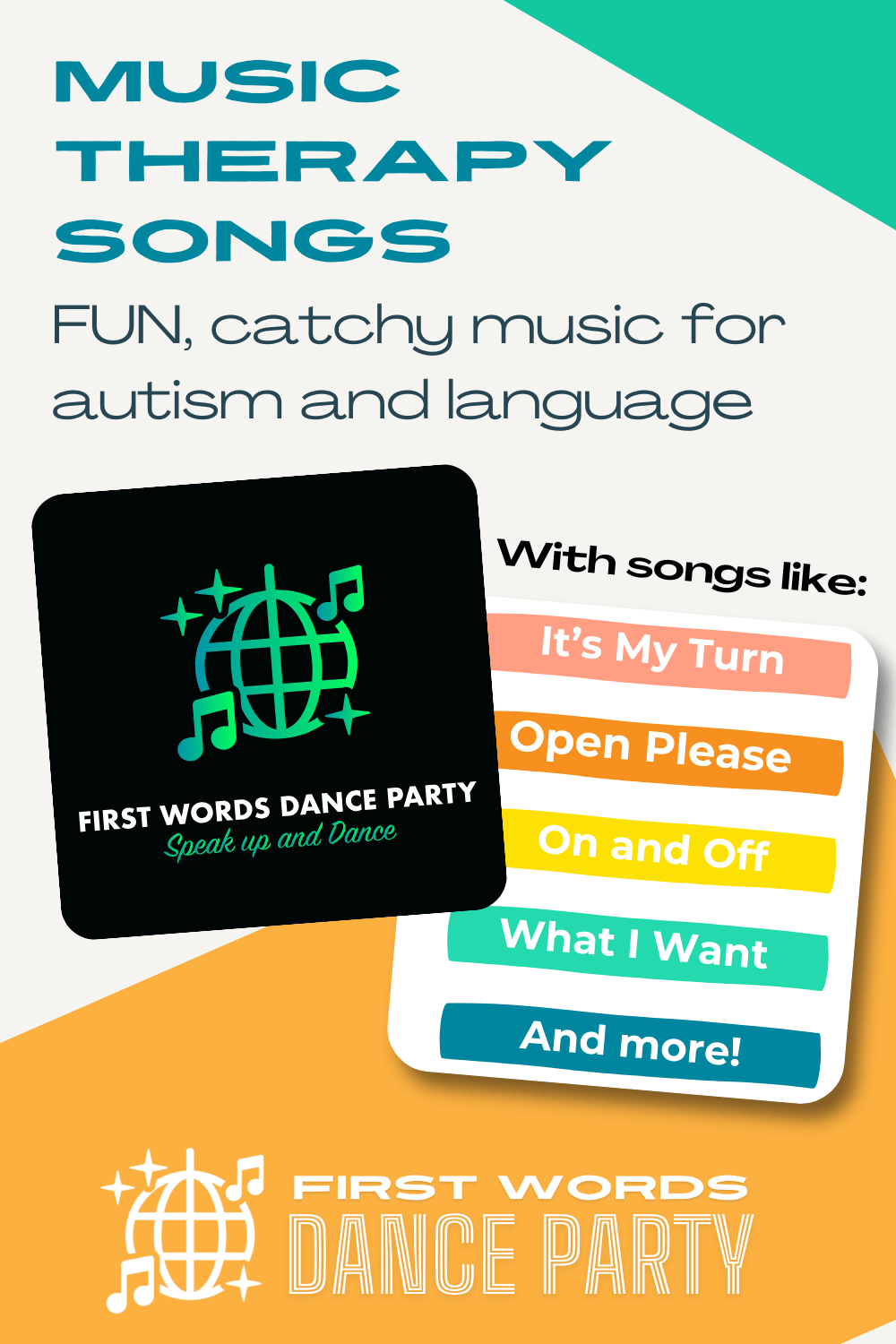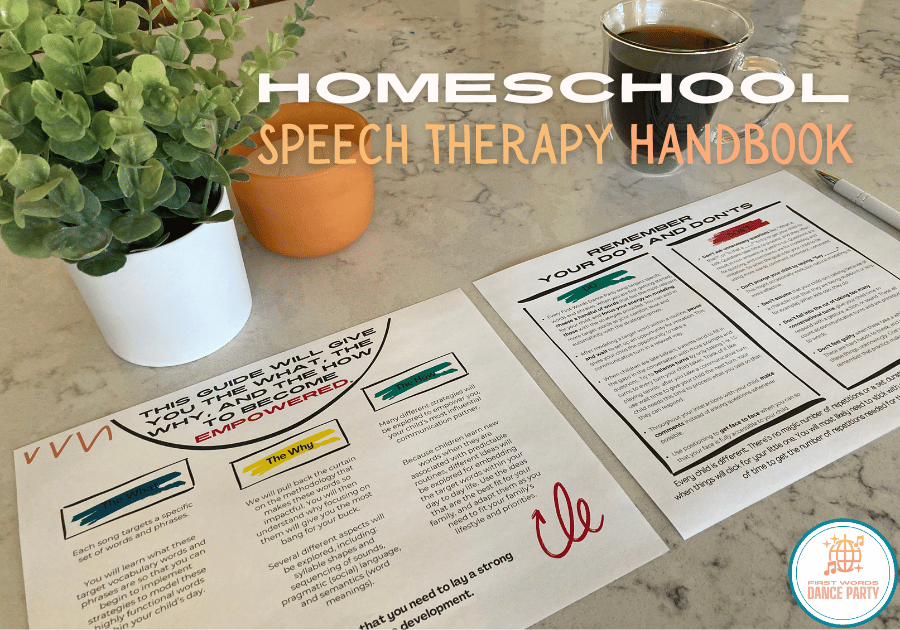Autism Music Therapy: 5 Reasons to Embrace This Promising Method
- 0 comments
If you’ve been wondering if your child is on the autism spectrum, or if your child has a diagnosis of autism, music therapy is definitely worth exploring.
Maybe you’ve noticed that nothing gets your child’s attention the way that hearing their favorite song does. Maybe you’ve found that your child loves to listen to the same songs over and over.
Or maybe you’ve found that when your child is upset, nothing calms them the same way as their favorite song.
Music isn’t just comforting and entertaining; it’s a powerful, research-backed tool that supports language development, emotional regulation, and engagement. And that’s exactly what we’re diving into in this post.
I’ll walk you through:
What music therapy is and why music is so impactful for autistic children
How music can support other interventions, like speech therapy, and
How you can start using music for autism therapy at home—even if you don’t consider yourself “musical”
In the fifteen years that I’ve coached parents in early intervention, I’ve seen firsthand how music opens doors for autistic children who are struggling to communicate. I created First Words Dance Party® to write original music for speech therapy, with functional early language structures, so that every song becomes a step toward connection.
You can download a free guide to discover 5 easy, parent-friendly steps to use songs for speech therapy at home to spark connection and communication with your child. As a bonus, you’ll receive song boards with cards for every First Words Dance Party® song, so your child can make choices and initiate.
Let’s explore five reasons why music belongs in every autism intervention toolbox—and how it can help you feel empowered, supported, and connected with your child.
First, what is music therapy for autism?
In the specialized field known as music therapy, a board-certified music therapist (MT-BC) provides interventions to autistic individuals in an individual or group setting. These professionals are trained to use music intentionally to help people reach specific, individualized goals in areas like communication, behavior, social-emotional development, and sensory integration.
For autistic children, music therapy can be a powerful way to support:
Expressive and receptive language
Social skills and turn-taking
Emotional regulation
Attention and task persistence
Sensory processing
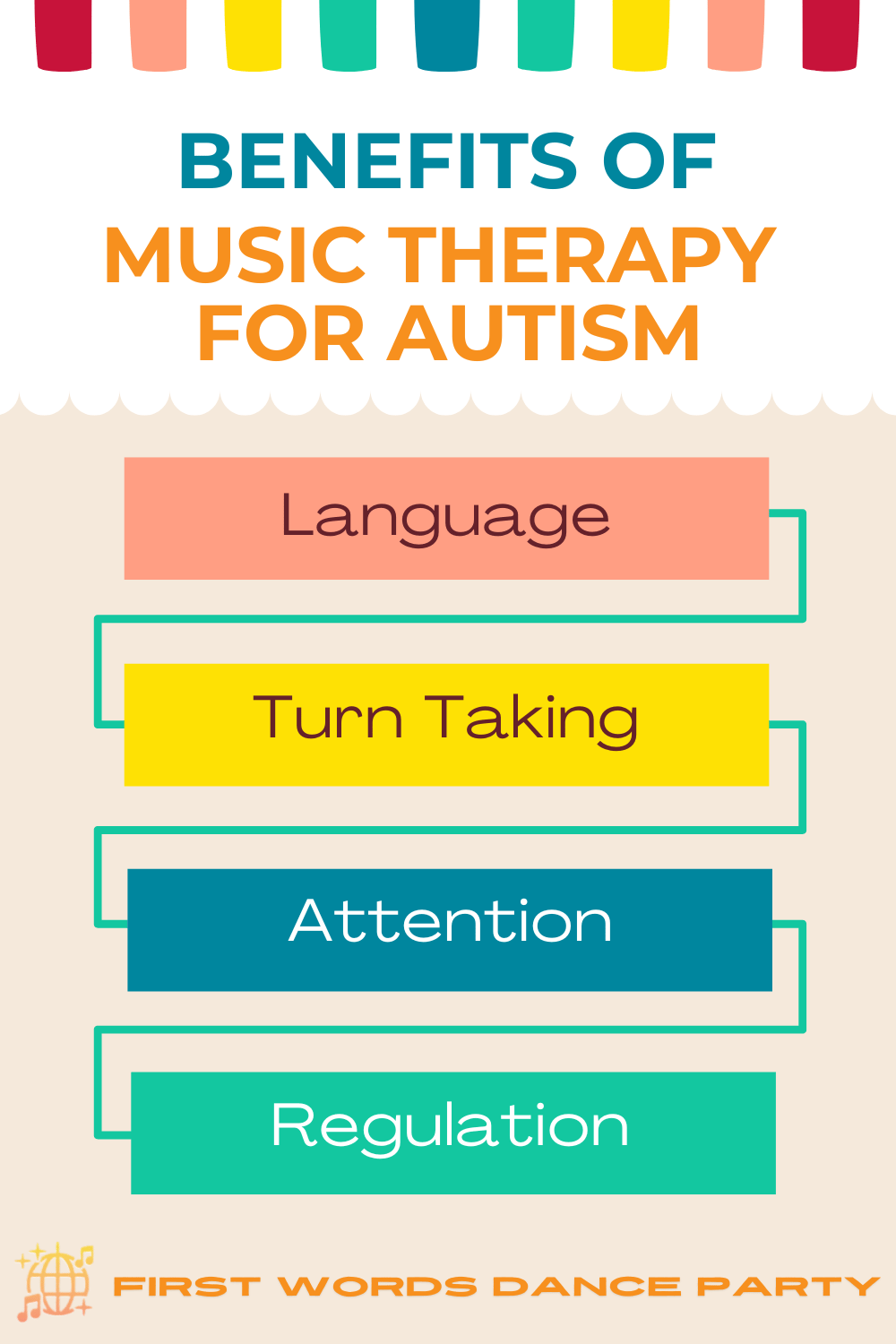
A music therapist might use singing, instrument play, movement, rhythm games, or songwriting—all tailored to a child’s interests and developmental level. What makes it therapeutic (and not just a music class) is that each activity is designed to target individualized goals, often written into a child’s educational or developmental plan.
Autistic music therapy vs music in other therapies
It’s important to distinguish music therapy from the strategy of incorporating music into other forms of therapy. While both can be incredibly valuable, music therapy refers specifically to work done by a trained music therapist with clinical goals.
By contrast, music can also be embedded into:
Speech-language therapy, to encourage vocalizations, joint attention, and to build early verbal imitation
Occupational therapy, to support motor planning, transitions, and sensory regulation
At-home routines, where parents use music to build connection and support communication in daily life

With this introduction in place, let’s get into five reasons to consider embracing music across all kinds of therapy interventions for children on the autism spectrum.
1. People on the spectrum often have heightened musical abilities
Research has shown that autistic individuals often process music in unique and powerful ways. In fact, some studies show that musical abilities are preserved—or even enhanced—in many autistic individuals, even when overall communication is delayed.
Musical ability can be one of the many strengths of autism- so it’s a no-brainer to use this as a jumping off point for skill building.
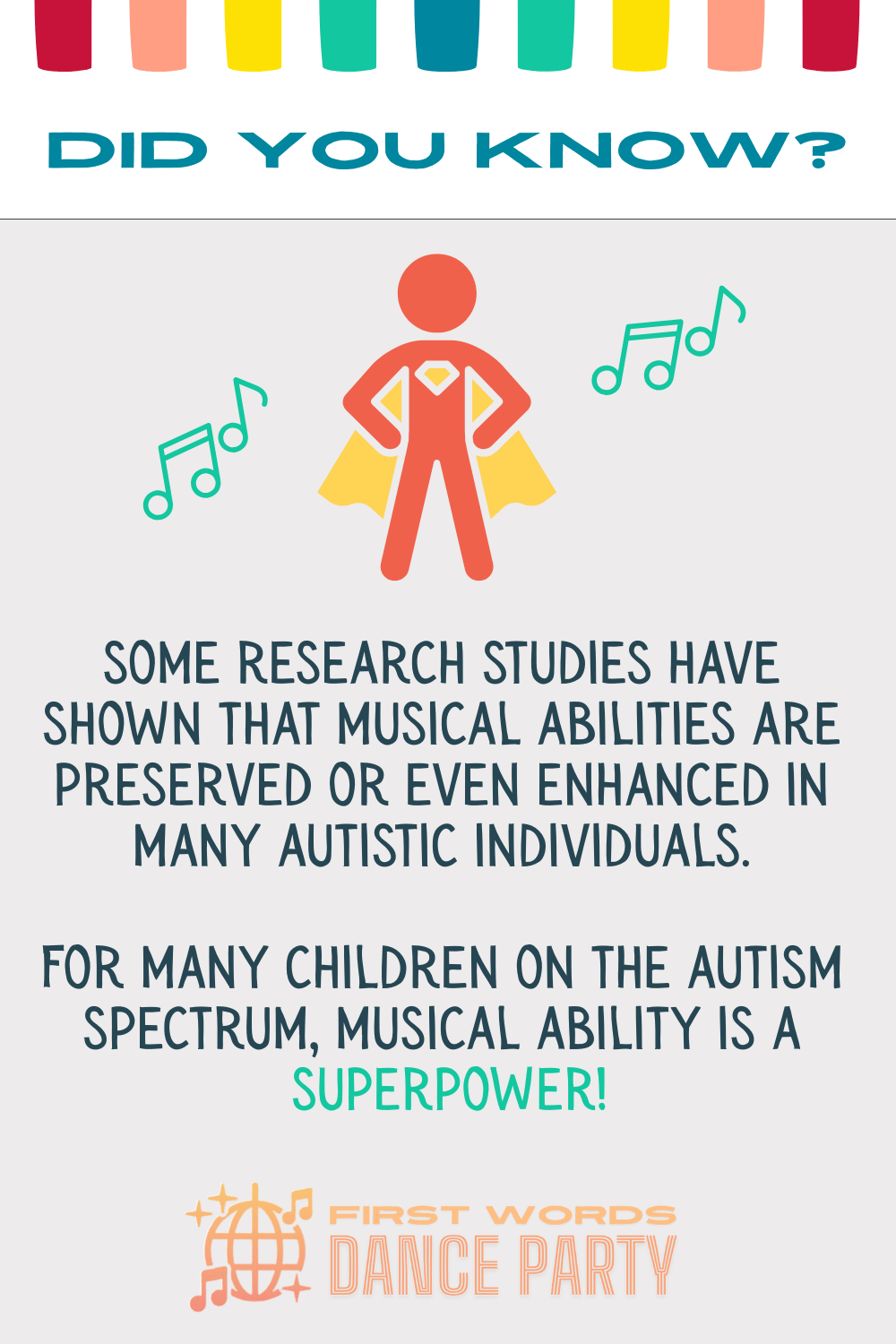
2. The use of music for autism therapy and intervention is evidence-based
There is a large volume of research that supports the use of music within interventions for autism. Here are just a few that are worth highlighting:
-
Sharda et al. (2018) – Proceedings of the National Academy of Sciences (PNAS)
This randomized control trial found that music intervention improved social communication and connectivity in the brains of autistic children.“Music intervention led to increased social communication and family quality of life and enhanced functional connectivity in brain regions associated with auditory and motor processing.”
Conclusion:
This is one of the strongest studies showing that music doesn’t just engage autistic children—it supports real change in brain function and behavior.
-
Zhou et al. (2025) A randomized controlled trial of the efficacy of music therapy on the social skills of children with autism spectrum disorder
This randomized controlled trial investigated the effects of music therapy on autistic children. The study found that:
Music therapy significantly improved social interaction skills, especially in areas like eye contact, turn-taking, and joint attention.
It also showed positive effects on language development, suggesting that music can support communication growth in autistic children.
Children with autism often display strong musical abilities, which the therapy successfully leveraged to engage them in meaningful ways.
Conclusion:
The study concludes that music therapy is a promising intervention to enhance both social and language skills in children who are on the autism spectrum.
-
Shi et al. (2024) The effect of music therapy on language communication and social skills in children with autism spectrum disorder: a systematic review and meta-analysis
What They Did:
Conducted a systematic review and meta-analysis of 18 randomized controlled trials involving 1,457 children diagnosed with autism spectrum disorder (ASD).
Searched across eight major databases, including PubMed, Embase, Web of Science, CNKI (China), and more.
Conclusion:
Music therapy shows strong positive effects on multiple functional domains—especially communication, social interaction, behavior, sensory processing, and self-care—in children with ASD. It’s a compelling, non-invasive early intervention worth promoting.
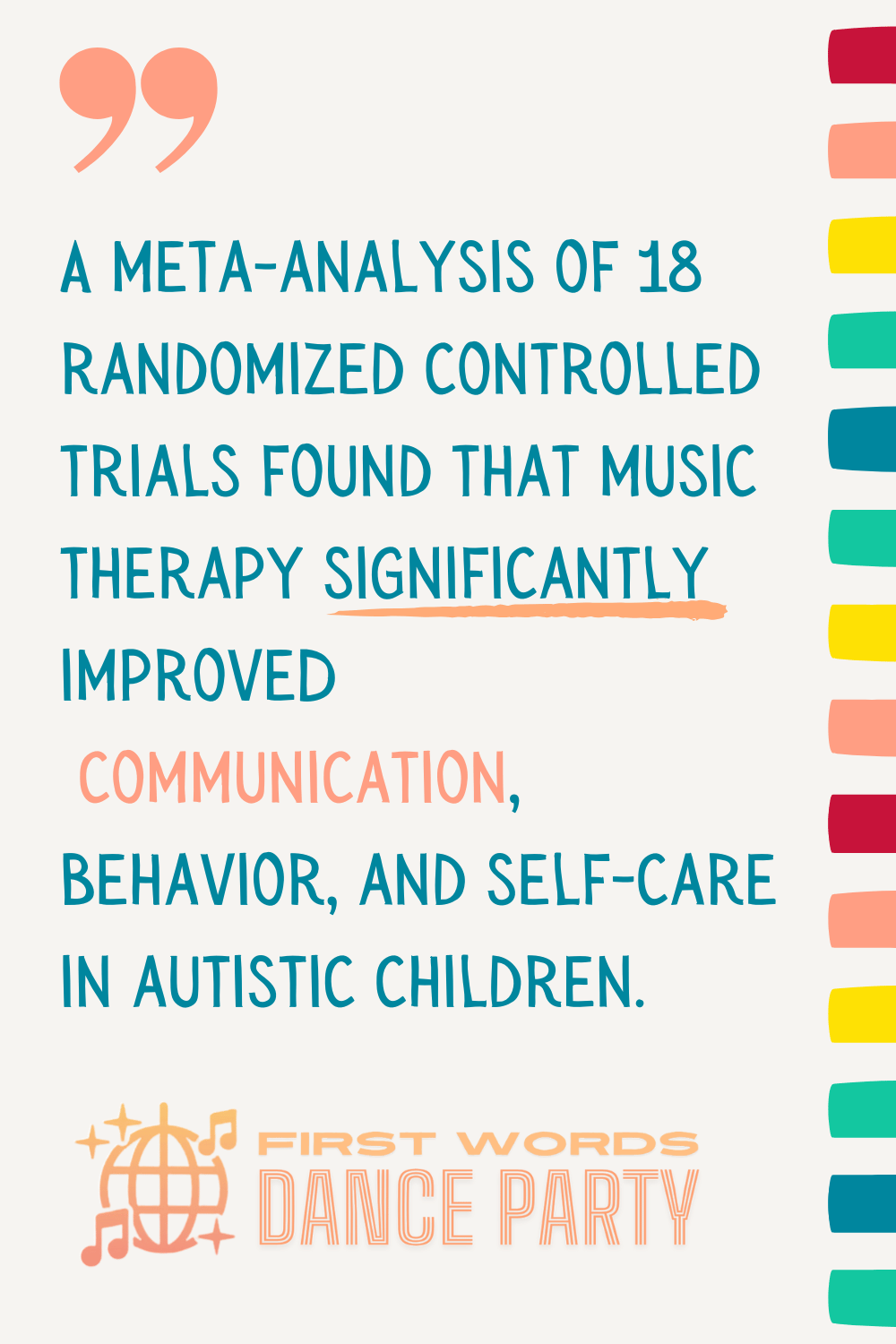
These findings suggest that music can serve as a powerful vehicle to support development in multiple areas.
3. Music Supports Emotional Regulation and Engagement
Music activates emotional centers in the brain and can have a regulating effect on the nervous system. This is especially important for autistic children, who may experience sensory sensitivities, anxiety, or difficulty with transitions.
A favorite song can become a tool for:
Calming during transitions
Connecting with others
Providing predictability in stressful or unfamiliar settings
Movement (which is also emotionally regulating)
When children feel regulated, they’re more available for interaction, imitation, and learning. Music creates that space—without pressure.
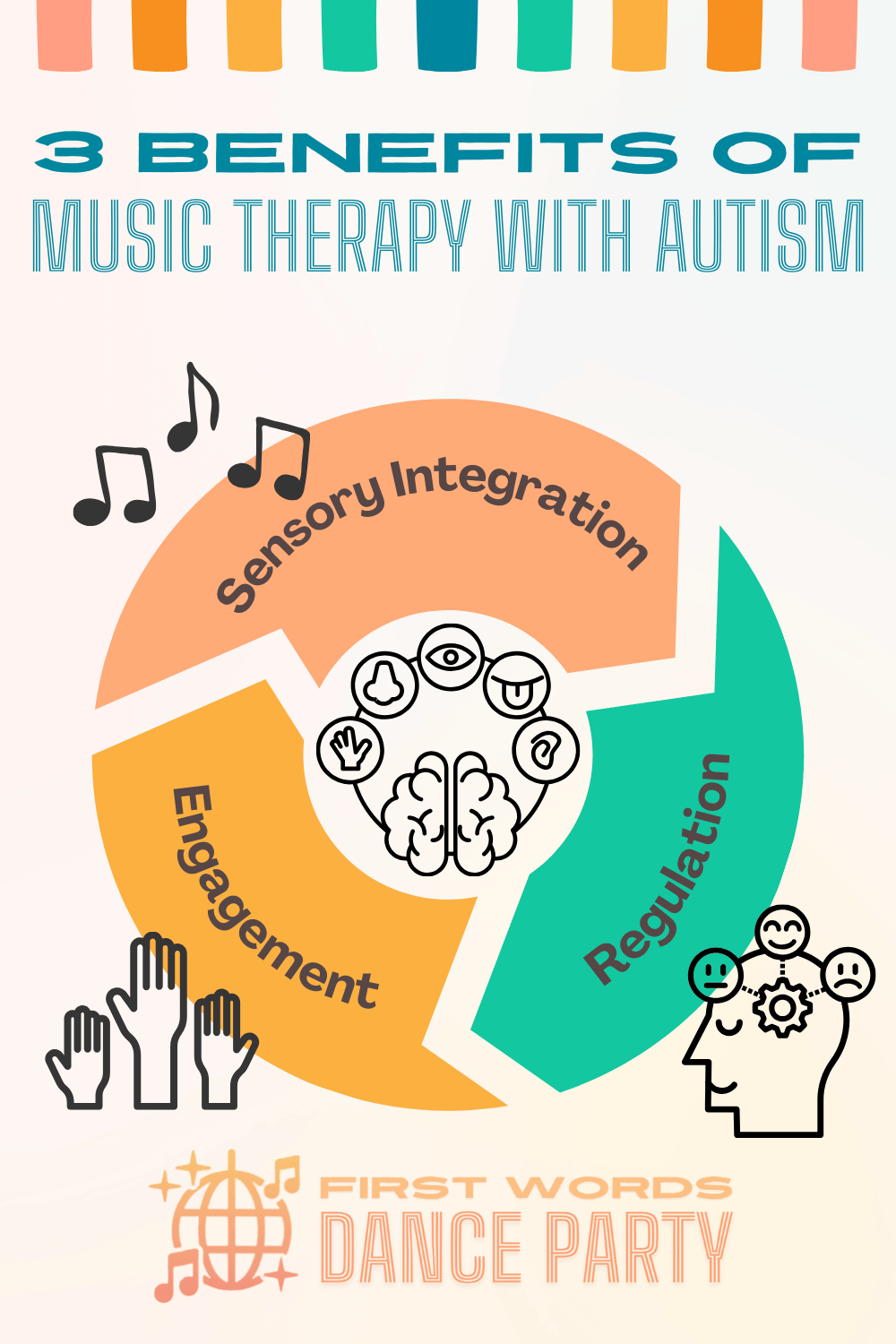
In a study published in Music Therapy Perspectives, researcher Blythe LaGasse found that rhythmic music helps autistic children improve attention, communication, and social skills—especially when used in group activities that encourage synchronized movement and imitation.
4. Music Boosts Language and Communication
Music and language are deeply connected in the brain. Both rely on rhythm, timing, memory, and pattern recognition.
For autistic children, who may struggle with the unpredictable flow of conversational speech, music provides structure and predictability— two therapeutic supports that set them up for success.
Rhythmic and melodic patterns in songs help children anticipate what’s coming next. This creates motivating opportunities to engage with others and imitate.
This is why children on the autism spectrum can often hum melodies, echo lyrics, or respond to musical cues when they are struggling to talk and direct their messages to others.
The melodic, rhythmic nature of music supports both expressive and receptive language by:
Enhancing auditory discrimination (the ability to hear and process sound differences)
Increasing vocabulary exposure in a memorable, engaging way
Encouraging imitation of words, gestures, and vocal patterns

In fact, one study published in Frontiers in Psychology found that children on the autism spectrum showed increased verbal responses and joint attention when participating in music-based interactions, compared to traditional spoken activities (Paul et al., 2015). Music primes the brain for communication.
Gestalt language processing
Music can be particularly beneficial for gestalt language processors— children who learn language in larger chunks or "scripts" rather than by processing language one word at a time. The emotional and rhythmic nature of music makes it especially helpful for these learners.
If your child echoes lines from songs or shows pretty easily, but they have a much harder time imitating you when you try to get them to, they may be a gestalt language processor. Gestalt language processing is very common among children who are on the autism spectrum.
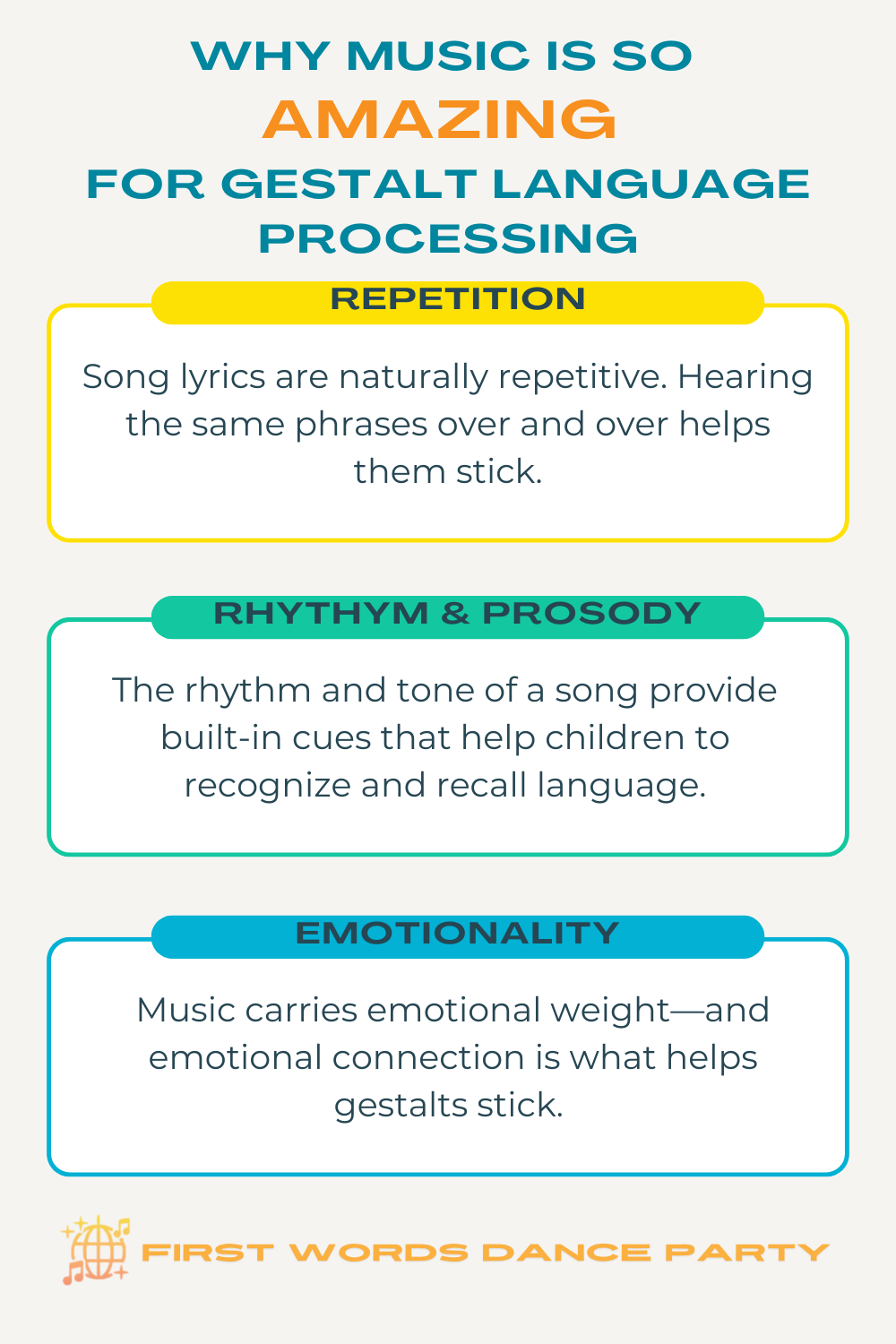
You can check out the three-part series to learn more about gestalt language processing:
Is your child a gestalt language processor? How to know- and why it matters
Gestalt language processors myths debunked: 6 untruths you'll want to nix
The gestalt language process: How to use music for quick, powerful wins
Whether led by an SLP or a parent at home, music is a powerful way to leverage the joyful nature of music for major communication success.
And that’s where First Words Dance Party® comes in.
5. You can listen to First Words Dance Party® music therapy songs for autism at home
There are plenty of children’s songs out there—but they weren’t written with autism and speech therapy in mind. That’s where First Words Dance Party is different.
These original songs for speech therapy were created not only for children, but for adults, too. They offer a refreshing alternative to traditional nursery rhymes—something you’ll actually enjoy singing along with on repeat. And every lyric uses speech therapy strategies.
Here are a few examples:
The Cookie Song: This kid favorite targets the core words yes and no, along with the words eat, want, what, doggie, and of course, cookie! This one is perfect for the child who shakes their head or says “no”, but doesn’t yet nod their head or say “yes” (a common characteristic in young children on the autism spectrum).
It’s My Turn: This song is written especially for little ones who don’t have the words yet to ask for a turn to have the item or toy that they want. This is a common struggle for children who are still learning how to use language socially to initiate with others.
Ready, Set, Go: This one uses a powerful strategy, called an anticipatory set, to promote engagement. It targets the opposite pair stop and go, along with the words push, pull, bubbles, uh-oh, oh no, more, and I. Check out this core words lyrics video to see how easy it is to model core words:
You can stream First Words Dance Party® on Spotify, YouTube Music, Apple Music, and anywhere else you get your music.
What makes First Words Dance Party® so dynamic for music therapy in autism
Each song is built around simple, functional language that’s easy to model and use across daily routines. You’ll hear words and phrases like “shoes on”, “help me”, and “open please”.
The lyrics were crafted this way so that these functional phrases can be carried over into real day to day routines.
The lyrics also model the simplest and most accessible syllable shapes. These songs weren’t created to replace speech therapy for autistic children; they were created to amplify it—by helping families bring evidence-based strategies into real life in a way that feels doable, accessible, and fun.
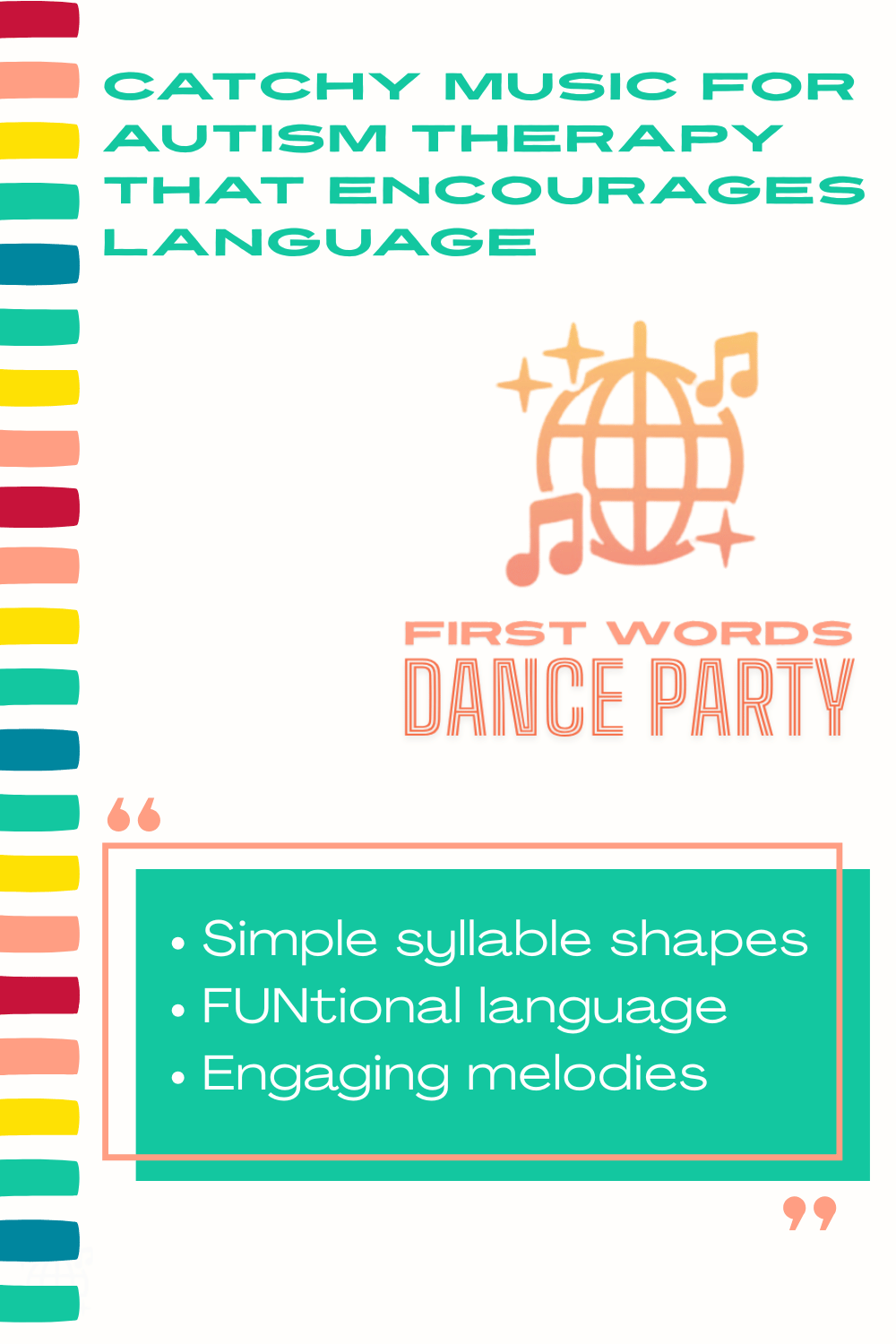
If you’ve ever felt the weight of trying to support your child’s speech progress at home—wondering “Where do I even start?” or feeling like the things you have tried just haven’t been successful—you’re absolutely not alone. Trying to navigate speech therapy home activities that feel meaningful and manageable (rather than another exhausting to‑do) can leave you drained, second‑guessing, and wishing for something simpler.
That’s where the Homeschool Speech Therapy Handbook comes in. Designed specifically for parents (not trained therapists) who want real‑life tools, this guide breaks down exactly what to do, why it works, and how to bring speech‑therapy practice into everyday moments—snack time, bath time, play time—without turning your home into a clinic.
Framed within a song-by-song breakdown of the Speak up and Dance album, you’ll discover how to apply the strategies within each song to real life for easy speech therapy practice at home. You’ll move from feeling overwhelmed and unsure to feeling confident and connected—watching your child engage, communicate, and grow in ways that feel easy and natural.
Final thoughts
Music therapy offers something truly special for autistic children: a way to connect, communicate, and grow.
Music offers a fun and effective way to tap into the language center of the brain. Music helps regulate and engage. It creates space for shared joy and real communication—without pressure.
If you’re ready to take the first step toward connection and communication with your child, download your free 5 Easy Steps to Kickstart Communication with Music for Speech Therapy at Home.
You don’t need to be a professional singer or a speech therapist to leverage the joy of music for major speech and language success. You just need the right songs, some simple strategies, and the willingness to show up with love and consistency.
I hope this article has guided you with helpful information on your parenting journey. Thanks for reading and for being your child’s advocate.
FAQ: Autism Music Therapy
What is autism music therapy, and how does it work?
Music therapy involves using structured musical activities to support communication, social interaction, and emotional regulation in autistic children. A board-certified music therapist targets specific, individualized goals with a child during a music therapy session with a combination of singing, instrument play, movement, call and response activities, and songwriting.
What are the best songs for autism?
Because music is a highly personal experience, young children tend to have preferences the same way that adults do. I bet you definitely know your child’s favorite songs! When considering songs for autism speech therapy, the best ones are simple and emotionally engaging, with functional words in the lyrics for children to imitate. The best songs will be easy to pair with gestures, sign language, AAC, and visuals. First Words Dance Party® songs are designed with these qualities in mind, making them ideal for supporting communication in autistic children.
Can music for autism help with speech and language?
Absolutely. Music can boost engagement, support transitions and routines, and promote early language skills like imitation. Research shows that music activates areas of the brain involved in speech and motor planning—making it a powerful support for children with speech delays or language disorders, including those on the autism spectrum.
Is there specific autism music for regulation and sleep?
Sometimes caregivers are looking for calming ambient music for sensory regulation and emotional support. Some music, tuned to specific frequencies, is believed to have calming or restorative effects on the body and mind. Some people use it for relaxation, stress reduction, emotional regulation, or meditation. Common examples include:
432 Hz – said to promote peace and balance
528 Hz – often called the "love frequency," associated with healing and transformation
Alpha or Theta wave music – designed to encourage deep relaxation or focus
What is the difference between autistic music therapy and using music in speech therapy?
Music therapy is led by a board-certified music therapist and focuses on using music itself as the therapeutic medium. In contrast, speech-language pathologists may integrate music into therapy sessions to support broader communication goals. And parents and caregivers might carryover the strategies being used in therapy sessions into daily routines and activities at home for even more opportunities for their child- for the greatest amount of impact.
Who are some real-life people who represent autism in music?
There are many successful, well-known autistic musicians whose talents have inspired people around the world. Kodi Lee, who won America’s Got Talent, is both blind and autistic and has remarkable vocal and piano skills. Derek Paravicin iand Tony DeBlois are musical savants with perfect pitch, and James Durbin, a finalist on American Idol, has shared his experience with autism and Tourette syndrome. Even Susan Boyle was later diagnosed with autism spectrum disorder, and has spoken openly about how music helped her thrive. These stories show just how powerful and expressive music can be for autistic individuals.
Will it help my child’s development to do music therapy with autism?
When used intentionally, music in autism supports development by enhancing emotional regulation, increasing attention, and building communication through predictable, engaging interaction. Whether in music therapy or daily routines, singing and using music-based strategies helps children connect and communicate in ways that feel joyful and natural. If you’ve been wondering if your child is on the autism spectrum, or if your child has a diagnosis of autism, music therapy is a powerful tool for intervention.
